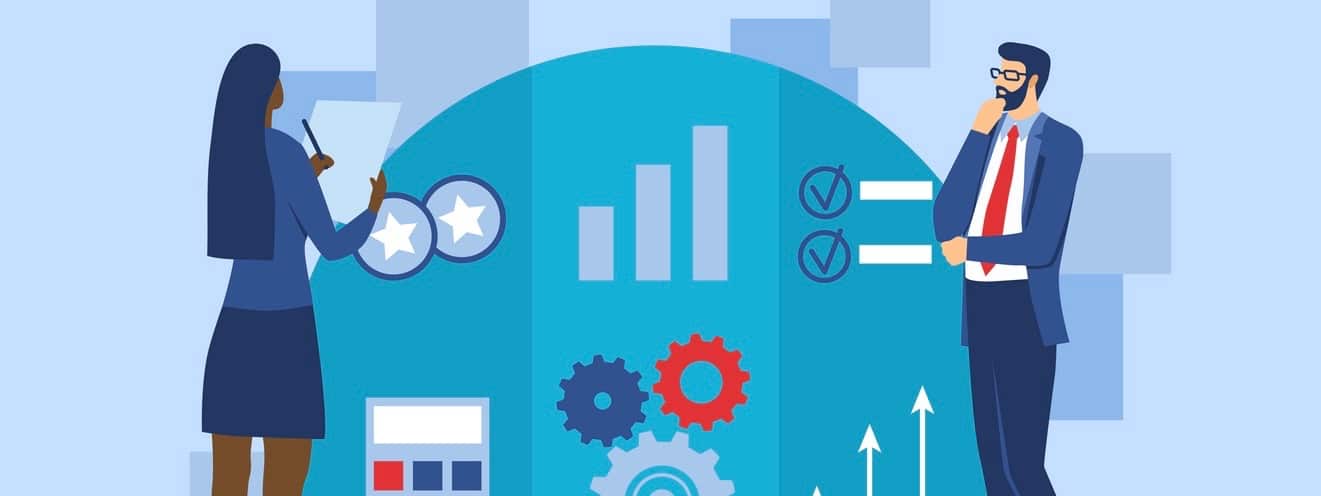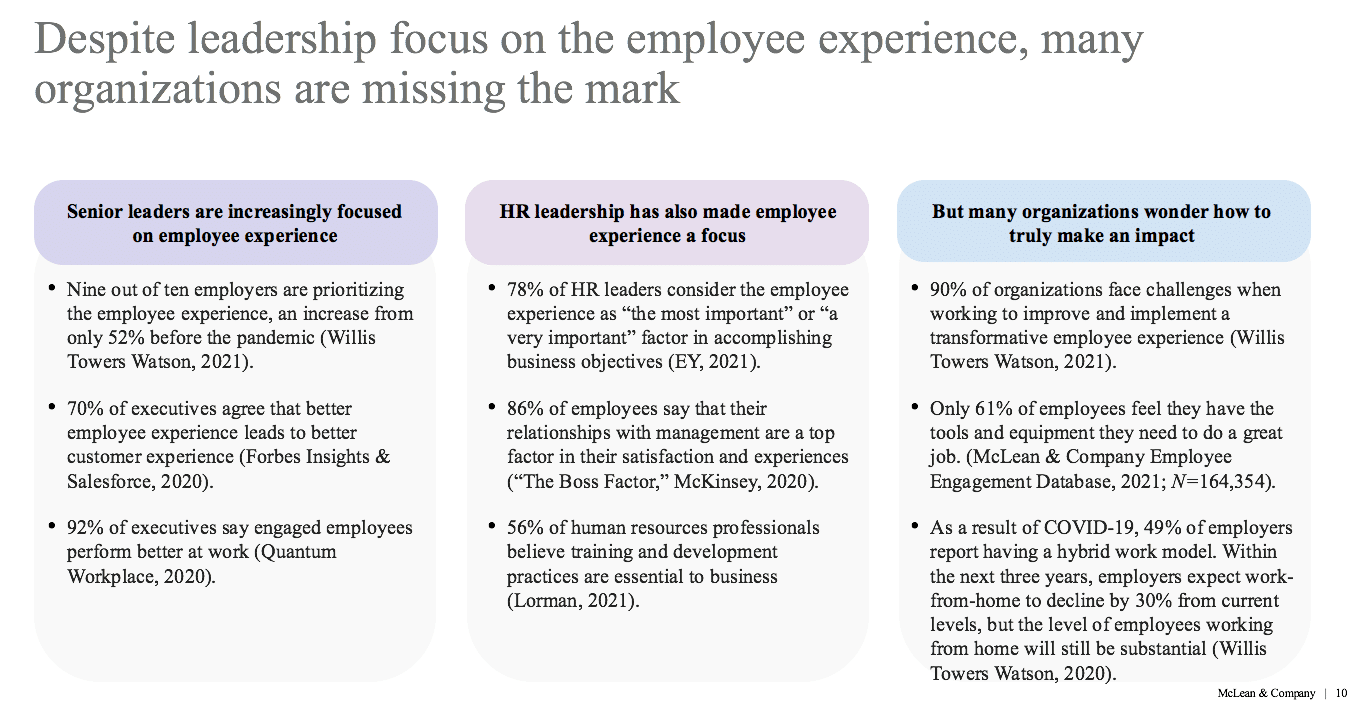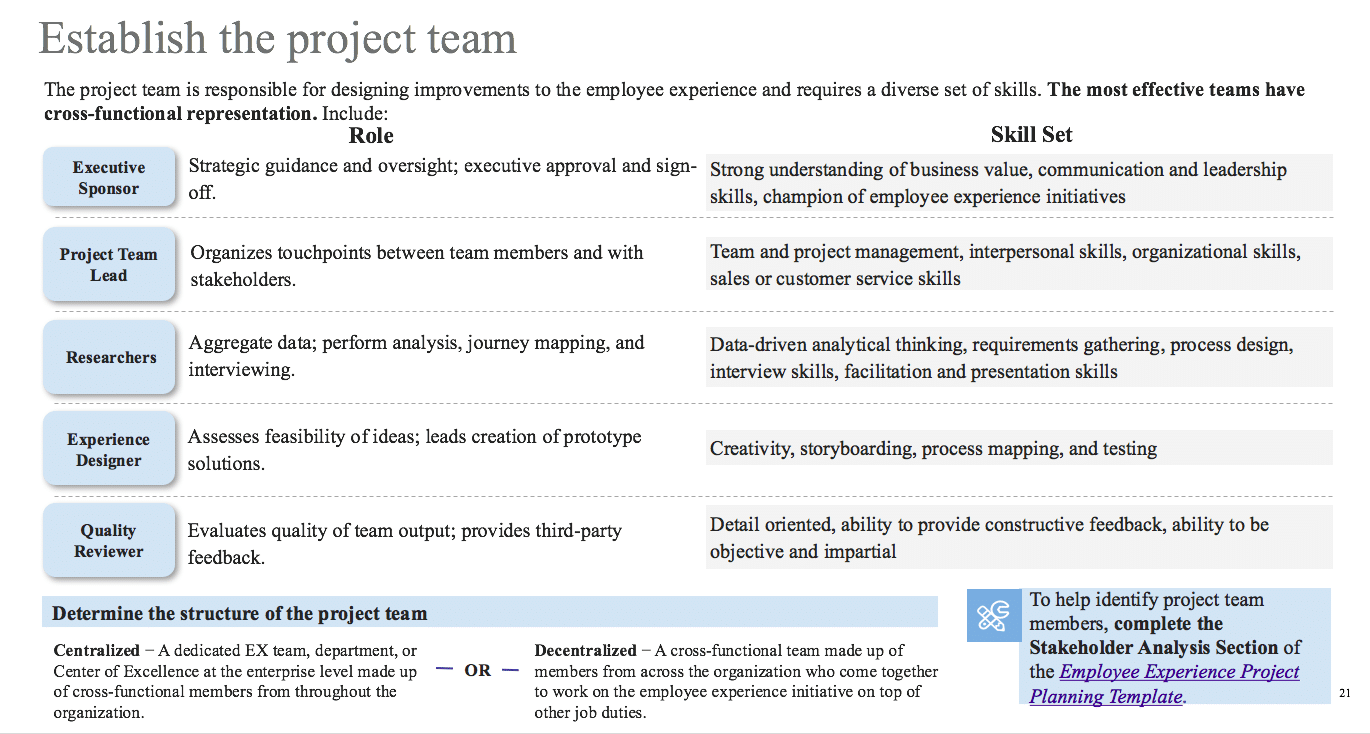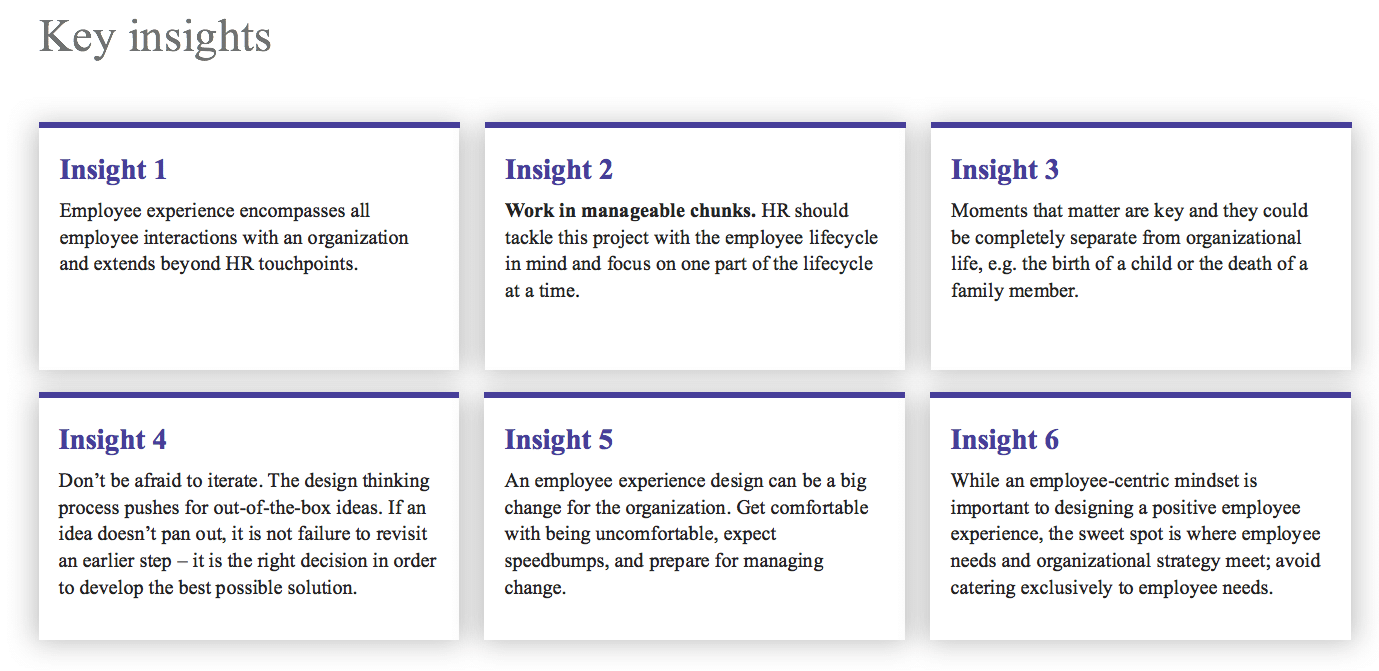Employees’ expectations of their experiences at work are evolving. Similar to their daily customer experiences, they want an overall employee experience that fits more seamlessly into their lives. HR and leadership professionals firm McLean & Company has published a new blueprint to guide HR leaders in designing an employee experience strategy. This timely research blueprint will allow HR leaders to find the sweet spot where employee needs and organizational strategy meet.
The firm’s 2021 Engagement Survey, with over 202,000 respondents, suggests that positive employee experiences lead to engaged employees, and engaged employees are 5x more likely to recommend the organization than those who are not engaged.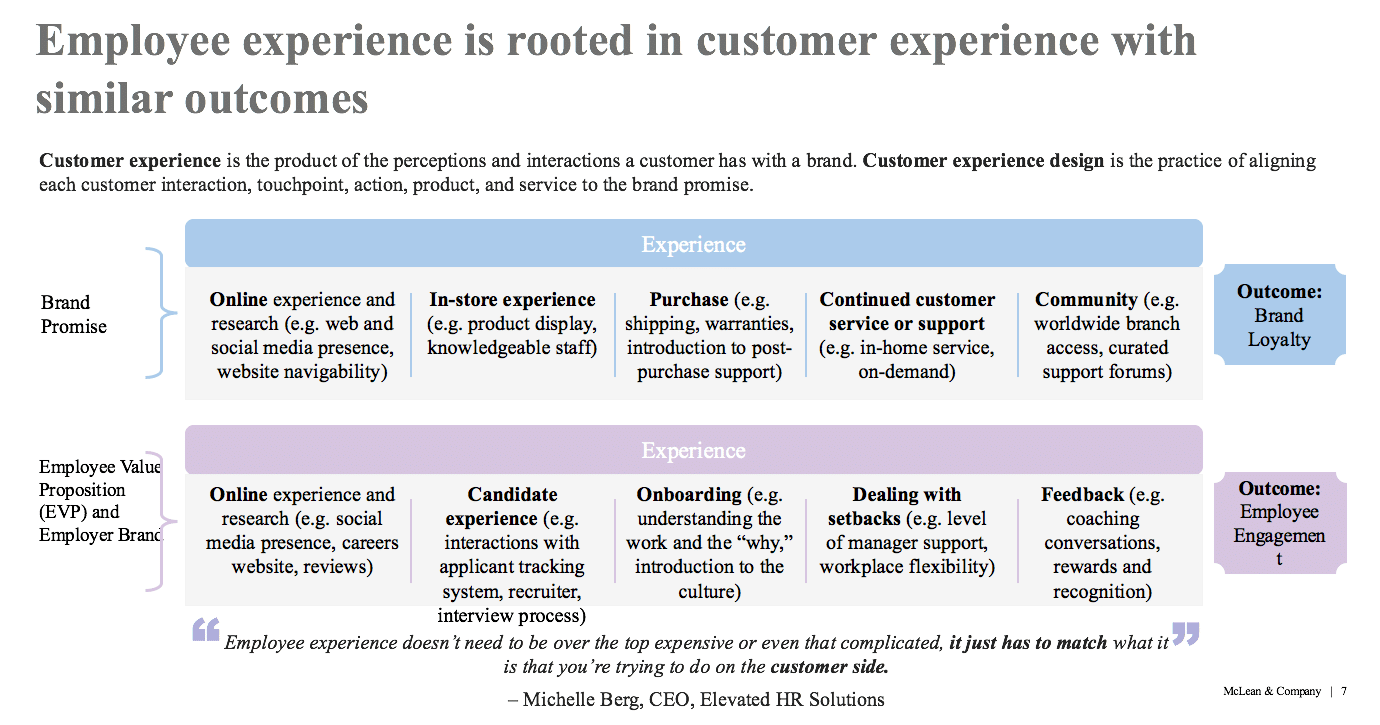
Increasingly, employers are recognizing life outside of the workplace and adapting work to accommodate it. Life can impact work, and similarly, work can impact life. Impacting the employee experience is dependent on creating a flexible framework that allows the organization to operate effectively while allowing enough customization for employees to adjust to suit their needs and context. McLean & Company’s Employee Engagement Survey found that employees who believe their managers care about them as a person are 3.4x more likely to be engaged than those who do not.
HR has a critical role to play in leading the organization’s employee experience efforts. As an expert in balancing employee and employer needs, HR is well positioned to positively and proactively impact the employee experience. Designing the employee experience is not a linear process. The blueprint’s iterative approach allows for movement back and forth through any of its outlined steps based on feedback that is gathered.
In the newly released blueprint, McLean & Company’s framework models a five-step process to design the employee experience to encompass all employee interactions with an organization. The blueprint is intended for HR leaders to start with the employee lifecycle and identify moments that matter, where the employee and employer needs are most aligned, and use a design thinking approach to engage employees in the process of identifying and designing a best-fit solution.

